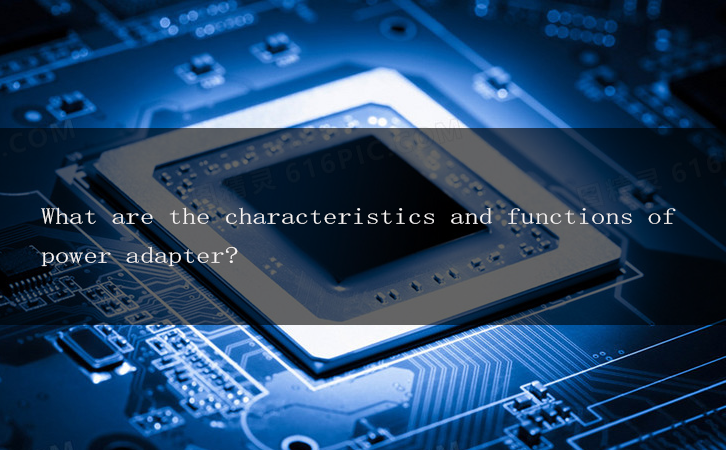What are the characteristics and functions of power adapter?
Published:2024-11-13 17:13:34 Author:admin Views:13
Characteristics and Functions of Power Adapter
Characteristics
Compact Size and Lightweight:
Power adapters do not utilize bulky line-frequency transformers, and the power dissipation on the switching MOSFETs is significantly reduced, eliminating the need for large heat sinks. This results in a substantial reduction in both the size and weight of the entire adapter.
Low Power Consumption and High Efficiency:
The switching MOSFETs in power adapters operate alternately in an on-off and off-on switching state under the excitation of an excitation signal, with a switching speed that is very fast, typically at frequencies above 50kHz. In some advanced switching power supply circuits, the frequency can reach hundreds or nearly thousands of Hz. This results in very low power consumption by the switching MOSFETs and a significant increase in power efficiency, which can reach up to 90%.
High Filtering Efficiency:
The high operating frequency of power adapters allows for a substantial reduction in the capacity and size of the filtering capacitors. At the same ripple output voltage, the capacity of the filtering capacitor in a switching power supply is only 1/500 to 1/1000 of that in a linear regulated power supply.
Wide Voltage Stabilization Range:
Power adapters have a wide voltage stabilization range and can compensate for variations in input signal voltage through frequency modulation or pulse width modulation to ensure a relatively stable output voltage even when the mains voltage varies significantly.
Functions
Voltage Conversion:
The primary function of a power adapter is to convert alternating current (AC) to direct current (DC) and regulate the voltage and current to meet the specific requirements of a device.
Overcurrent/Overvoltage Protection:
Many power adapters are equipped with overcurrent and overvoltage protection functions to prevent damage to devices due to excessive current or voltage.
Short-Circuit Protection:
In the event of a short circuit at the output end, the power adapter can automatically cut off the output to prevent the fault from escalating.
Temperature Control:
Some power adapters are equipped with internal temperature sensors and cooling devices to monitor and control the adapter's operating temperature, ensuring it operates within a safe range.
Multiple Output Interfaces:
Power adapters typically have multiple output interfaces and specifications to accommodate the charging needs of different devices. For example, laptops, mobile phones, tablets, and other devices may require power adapters with different voltages and currents.
Energy Efficiency:
With technological advancements, modern power adapters are designed and manufactured with a greater emphasis on energy efficiency. By adopting advanced switching power supply technology and materials, power adapters provide stable power output while also reducing energy consumption and carbon emissions.
In summary, power adapter is characterized by their compact size, lightweight, low power consumption, high efficiency, high filtering efficiency, and wide voltage stabilization range. They also offer functions such as voltage conversion, overcurrent/overvoltage protection, short-circuit protection, temperature control, multiple output interfaces, and energy efficiency. These characteristics and functions make power adapters widely used in daily life and work.
IntroductionGolf carts serve as vital transportation tools on golf courses, and their performance and reliability are crucial for enhancing player experience an···
The battery pack is the heart of a golf cart, silently powering every acceleration and climb on the green. However, battery degradation often goes unnoticed, mu···
The battery pack is the heart of a golf cart’s power system, yet maintaining it has long been a challenge for technicians. Traditional troubleshooting methods—···
For golf course managers, ensuring smooth and efficient operations is crucial for providing a memorable experience for golfers and maintaining the reputation of···





